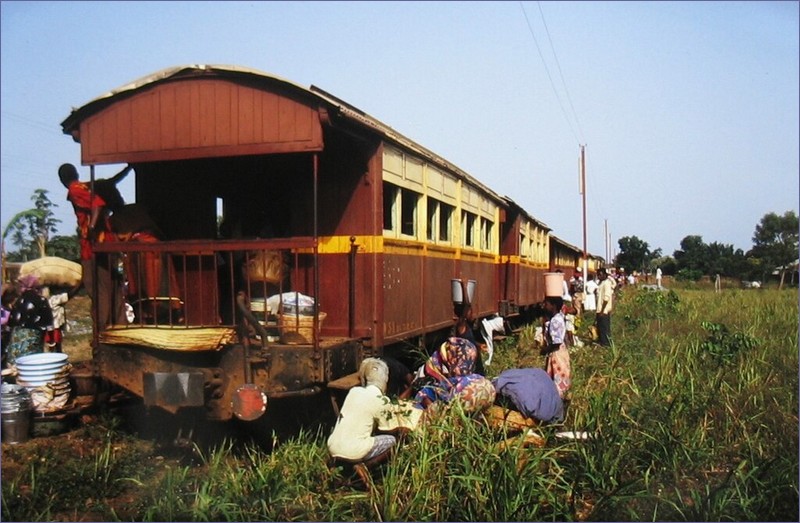The first railway line in Togo, opened on 18 July 1905, connected the administrative center of German protectorate of Togoland Lomé with coastal town of Aného (44 km). The railway line initially was used for transport of goods from port to inland. On 15 May 1906 was officially introduced timetable for passenger trains, although passengers already traveled on work trains. A pair of trains ran every working day and journey from Lomé to Aného takes almost two hours.
Togo gained its indenpedence in 1960. During 1970s four pairs of trains ran daily on the route. The railway line was shut down in 1985 and mostly dismantled.
Last update: 29.01.2024
The second railway line in Togo was opened on 27 January 1907. The line from Lomé to Kpalime was 119 long and was built in meter gauge, typical for German colonies.
The longest railway line in Togo was built from 1907 to 1913. It reached Atakpame in 1913 (167 km). The line was extended to Blitta in the 1930s, but further extension Sokodé and French West Africa was not realized due to lack of funds. In 1958 was opened a branch linking Togblekovhe and Tabligbo (58 km).
In 1999 all passenger services in Togo ceased.
In 2014 were opened two railway lines for freight transport: the railway line from Lomé to Adétikopé (20 km) and a 3 km branch from Lomé to Aflao, Ghana.
There is also a private phosphate railway between Kpémé and Hahotoé.
Train travel in Togo – current situation
There are no passenger trains in Togo. There are only freight trains. In 2018 Togo’s government announced project construction of a Lomé – Cinkassé railway line (670 km). Cinkassé is a border town near the border with Ghana and Burkina Faso. The railway will be served by a modern standard gauge rail system dedicated to heavy traffic and allows cross-border trade. The plan probably failed.
Togo is a participant in the AfricaRail – Indian project construction of a network of railway lines, which will connect Togo, Ivory Coast, Burkina Faso, Niger, and Benin.
Related articles:
